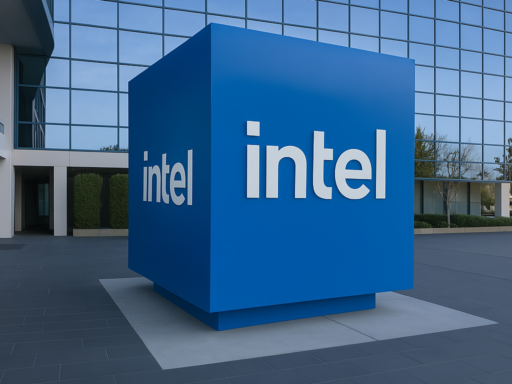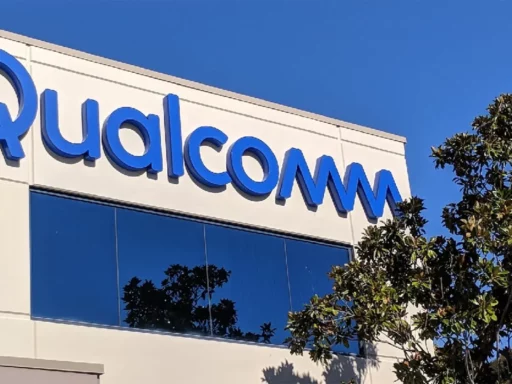NVIDIA Corporation, a global pioneer in graphics processing units (GPUs), artificial intelligence (AI), and high-performance computing, has become one of the most influential technology companies in the world. While it’s best known for powering gaming platforms and AI applications, NVIDIA is also emerging as a sustainability-focused innovator. The company is working to reduce its environmental impact through energy-efficient data center technologies, responsible sourcing, and low-carbon manufacturing.
As of 2024, NVIDIA is integrating sustainability into its product development, operations, and supply chain. Its core sustainability commitments include carbon neutrality across its operations, reducing emissions from its value chain, and advancing technologies that help other industries reduce their own environmental footprints. In its latest impact report, NVIDIA emphasizes its dual role in both mitigating its footprint and enabling sustainability solutions through AI and accelerated computing.
- NVIDIA achieved 100% renewable energy use in U.S. operations and is expanding globally.
- The company aims to be carbon neutral across its Scope 1 and 2 emissions by 2025.
- NVIDIA’s GPUs and AI systems help customers reduce data center energy usage by up to 42% compared to traditional CPUs.
Source: https://www.nvidia.com/en-us/sustainability/
Sustainability Strategy and Goals
NVIDIA’s sustainability strategy revolves around climate action, energy efficiency, and enabling decarbonization through innovation. The company has aligned its goals with the Science-Based Targets initiative (SBTi) and aims to achieve net-zero emissions across Scope 1 and 2 by 2025, while also addressing Scope 3 emissions from its supply chain and product use.
In its operations, NVIDIA is focused on energy-efficient infrastructure, responsible water use, and sustainable design practices. The company’s approach includes reducing embodied carbon in chip manufacturing and minimizing waste in packaging and logistics. NVIDIA also works with suppliers to enhance their environmental performance and meet sustainability standards, including those related to minerals sourcing, energy, and labor rights.
In 2023, NVIDIA joined the RE100 initiative, committing to sourcing 100% renewable electricity across all global operations. The company also engages in climate scenario analysis and transparent disclosures through CDP and TCFD frameworks to improve climate risk governance.
- NVIDIA has committed to reducing Scope 1 and 2 emissions by 100% and Scope 3 emissions by 30% by 2030 (vs. 2020 baseline).
- Over 85% of NVIDIA’s total electricity use worldwide comes from renewable sources as of 2023.
- The company’s top-tier suppliers must meet environmental standards on energy, emissions, and waste.
Source: https://www.nvidia.com/content/dam/en-zz/Solutions/about-us/documents/nvidia-csr-report-fy23.pdf
Key Sustainability Innovations and Technologies
NVIDIA’s most powerful contribution to sustainability comes from its technologies. The company’s high-performance GPUs are designed to be more energy-efficient than traditional CPUs in demanding computing tasks. By enabling faster, parallel processing, NVIDIA chips reduce the energy needed for AI, simulations, and machine learning across data centers, making cloud computing more sustainable.
Its AI platforms also support environmental solutions across industries. NVIDIA GPUs are used in climate modeling, smart grid optimization, wildfire prediction, precision agriculture, and sustainable supply chain management. These applications help other companies and governments accelerate progress toward their climate goals.
The company’s latest DGX systems and data center solutions are designed with energy efficiency at the core. NVIDIA also develops simulation tools like Omniverse, which companies use to model and optimize operations for reduced emissions, energy use, and material waste.
- NVIDIA’s GPUs reduce energy consumption in AI workloads by up to 42% compared to CPU-only systems.
- Omniverse is used by partners like BMW and Ericsson to model sustainable factories and energy grids.
- NVIDIA BlueField DPUs enable more efficient data center performance with up to 80% lower CPU utilization.
Source: https://www.nvidia.com/en-us/sustainability/solutions/
Measurable Impacts
NVIDIA’s sustainability investments have produced clear environmental benefits in recent years. The company has achieved significant emissions reductions in its operations through renewable energy, energy efficiency, and optimized data center design. In FY23, NVIDIA reported that its Scope 1 and 2 emissions dropped by over 20% compared to FY21, even as its business grew substantially.
The company has improved resource efficiency in its chip packaging and has reduced the volume of packaging materials used per unit shipped. Additionally, NVIDIA’s global facilities are increasingly powered by clean electricity, with operations in the U.S., Europe, and key parts of Asia already transitioning to 100% renewables.
NVIDIA also helps customers and partners measure and lower their emissions through accelerated computing. Many enterprise clients have reported lower data center costs and reduced environmental footprints as a result of switching to NVIDIA-powered infrastructure.
- Scope 1 and 2 emissions dropped by 21% between FY21 and FY23.
- NVIDIA’s packaging redesign reduced material volume per unit by over 20%.
- Data centers using NVIDIA systems report up to 40% lower carbon emissions per computation task.
Source: https://www.nvidia.com/en-us/sustainability/performance/
Challenges and Areas for Improvement
Despite its achievements, NVIDIA faces several key challenges in its sustainability journey. One of the most pressing is the complexity of addressing Scope 3 emissions, especially those related to semiconductor manufacturing and the downstream use of its chips in energy-intensive applications like gaming and cryptocurrency mining.
The environmental footprint of chip production—especially related to water use, rare earth minerals, and energy—is substantial. While NVIDIA does not manufacture its own chips, it works closely with partners like TSMC and Samsung, which must align with NVIDIA’s environmental and labor expectations. Further transparency and collaboration will be needed to ensure supplier emissions reduction.
Another area for improvement is end-of-life product recycling and e-waste. As a hardware provider, NVIDIA has limited direct control over how its GPUs are disposed of or repurposed, making it important to enhance take-back and circular economy strategies.
- Only 10% of NVIDIA’s Scope 3 emissions are currently accounted for by renewable electricity use among its suppliers.
- Semiconductor manufacturing contributes more than 70% of total embodied carbon in GPUs.
- NVIDIA aims to enhance product recyclability and improve e-waste tracking globally by 2026.
Source: https://www.nvidia.com/content/dam/en-zz/Solutions/about-us/documents/nvidia-csr-report-fy23.pdf
Future Plans and Long-Term Goals
NVIDIA’s long-term environmental roadmap focuses on scaling energy efficiency, achieving global renewable energy adoption, and contributing to decarbonization through AI and simulation. The company is working toward 100% renewable energy use worldwide and further reducing Scope 3 emissions through supplier engagement and product innovation.
In addition, NVIDIA plans to expand the sustainability functions of its Omniverse platform, allowing more industries to simulate complex environments for optimization and emissions modeling. NVIDIA also aims to increase climate risk transparency through more detailed TCFD-aligned disclosures.
NVIDIA is expected to release enhanced reporting on its product lifecycle impacts and is developing plans to incorporate recycled materials into more components, along with partnering on e-waste programs to close the product loop.
- NVIDIA targets 100% renewable electricity across all global operations by 2025.
- Scope 3 emissions to be reduced by 30% by 2030 through supplier collaboration and improved product efficiency.
- Increased integration of AI for sustainable development in energy, mobility, and infrastructure sectors.
Source: https://www.nvidia.com/en-us/sustainability/
Comparisons to Industry Competitors
NVIDIA’s sustainability efforts stand out among high-performance computing companies for integrating energy efficiency into the core of its product strategy. However, it operates in a complex ecosystem with competitors like Intel, AMD, and Google Cloud, each of whom is also investing heavily in sustainability.
Intel: Intel has committed to net-zero Scope 1 and 2 emissions by 2040 and aims to achieve net-zero for its supply chain and product use by 2050. It invests in sustainable manufacturing and water reclamation.
Source: https://www.intel.com/content/www/us/en/corporate-responsibility/sustainability.html
AMD: AMD targets a 30x improvement in energy efficiency of its processors by 2025. It emphasizes circular design and uses 100% renewable energy for U.S. operations.
Source: https://www.amd.com/en/corporate-responsibility/environmental-sustainability
Google Cloud: Google is already carbon neutral and aims to run entirely on carbon-free energy 24/7 at all its data centers by 2030. Google Cloud emphasizes AI for sustainability applications.
Source: https://sustainability.google/
- Intel aims for net-zero across operations by 2040, with a strong focus on water use and green fabs.
- AMD achieved a 6.8x increase in energy efficiency from 2020–2023 for data center processors.
- Google Cloud powers its operations with 100% renewable energy and is developing climate-resilient infrastructure.
Our Thoughts
NVIDIA is uniquely positioned to be both a low-emissions technology company and an enabler of climate solutions across industries. Its commitment to energy efficiency, renewable energy, and accelerated computing creates real value for customers and measurable impact in emissions reduction. By integrating sustainability into both its operations and innovations, NVIDIA helps others achieve their climate goals, amplifying its positive impact.
That said, Scope 3 emissions and product lifecycle impacts remain critical areas for improvement. More robust e-waste strategies and transparency in upstream manufacturing will be essential to meet its climate targets. With its AI and simulation platforms driving decarbonization across sectors, NVIDIA has the opportunity not just to meet, but to lead the tech industry toward a more sustainable future.






